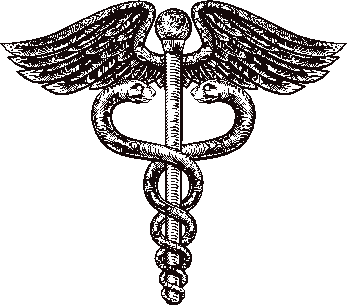Contributed by Veronica Mahathre, MPH
 Greek philosopher, Hippocrates widely known as the father of medicine, recognized the benefits of opium as a narcotic. Thousands of years later, opium has been medicalized into opiates- think hydrocodone, fentanyl, and methadone. The medicalization of opiates is relatively new as well as the practice of pain management and the scientific discipline of pain research compared to the rest of medicine. With the combination of the supply and demand of potentially addictive medication and the beginning stages of pain management practice and research, it is no surprise that in the 21st century, there is a dilemma for health care providers asked to relieve suffering. The opioid epidemic has hit the United States hard; however, the response to the opioid epidemic is hitting back just as hard or arguably harder.
Greek philosopher, Hippocrates widely known as the father of medicine, recognized the benefits of opium as a narcotic. Thousands of years later, opium has been medicalized into opiates- think hydrocodone, fentanyl, and methadone. The medicalization of opiates is relatively new as well as the practice of pain management and the scientific discipline of pain research compared to the rest of medicine. With the combination of the supply and demand of potentially addictive medication and the beginning stages of pain management practice and research, it is no surprise that in the 21st century, there is a dilemma for health care providers asked to relieve suffering. The opioid epidemic has hit the United States hard; however, the response to the opioid epidemic is hitting back just as hard or arguably harder.
Let’s imagine this scenario: a mother acquires a back injury on the job and she visits the doctor who prescribes an opiate for pain. She starts to feel better and leaves the pain prescription in the bathroom cabinet. Her teenage son injures himself while playing sports and helps himself to the medication. Either one of two things can happen: the son will stop using the pills and carry on with his adolescent life, or he will start misusing the opiate. Who is to blame here for the misuse? Most often than not, the blame is given to the concerted efforts of all persons involved. The physician’s first line of response to the back injury, the mother’s endangerment of leaving the opioid prescription accessible and the teenager’s illegal use of prescription drug. This story paints the backdrop of one of many instances where teenagers easily acquire prescription medications and use it illegally. In 2015, the American Society of Addiction Medicine reported that “276,000 adolescents were current nonmedical users of pain reliever, with 122,000 having an addiction to prescription pain relievers.”
While educational campaigns spread awareness on opioids and their potentially harmful effects upon misuse, there is still a demand for opioids. The National Institute of Drug Abuse report highlighted that half of high school seniors “will have taken an illegal drug…and more than 20 percent will have used a prescription drug for nonmedical purpose.” In this same report, it was found that only 38.7% 12-17 year olds who abused prescription drugs received treatment.
This beckons the question of why there is a shortage of teenagers who receive treatment. There is no simple answer to this question, as it could be attributed to a number of reasons. However, at a time where there is a plethora of support from substance abuse services and community efforts to ensure accessibility and affordability- it’s likely that there could be an underlying issue that stands in the way of youth seeking treatment. That issue being stigma-it’s possible that stigma still largely influences teenagers receiving treatment. As prevention efforts continue to expand in environmental strategies (e.g., opioid dispensary stations), provider education (e.g., CDC opioid guidelines for physicians), and policy (e.g., Mental Health Parity and Addiction Act), there should be more efforts in youth education. Specifically, the deconstruction of the stigma associated with seeking treatment should receive equal attention.
Given the available resources, tools and initiatives, shifting the stigma of opioid abuse from shame to a philosophy of wellbeing should also be included in the response to opioid abuse. Hippocrates said “Make a habit of two things: to help; or at least to do no harm.” It’s up to public health professionals, providers and the community to help break the stigma of seeking treatment and advocate for treatments that are safe as well as promote well-being.
 Veronica Mahathre, MPH, is the Health Communications Coordinator with the Gwinnett, Newton and Rockdale County Health Departments. The Gwinnett, Newton and Rockdale County Health Departments work to protect and improve the health of those who work, live and play in their community by monitoring and preventing disease; promoting health and well-being and preparing for disasters. For more information please visit the Health Department’s website at www.gnrhealth.com or call the Health Communications Office at 678-442-6873.
Veronica Mahathre, MPH, is the Health Communications Coordinator with the Gwinnett, Newton and Rockdale County Health Departments. The Gwinnett, Newton and Rockdale County Health Departments work to protect and improve the health of those who work, live and play in their community by monitoring and preventing disease; promoting health and well-being and preparing for disasters. For more information please visit the Health Department’s website at www.gnrhealth.com or call the Health Communications Office at 678-442-6873.
